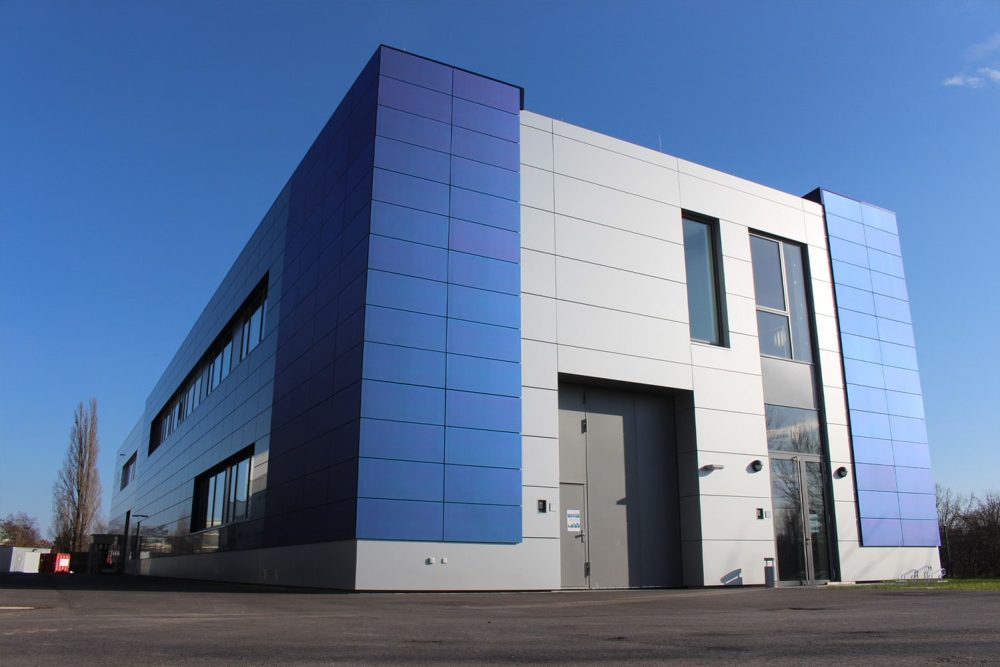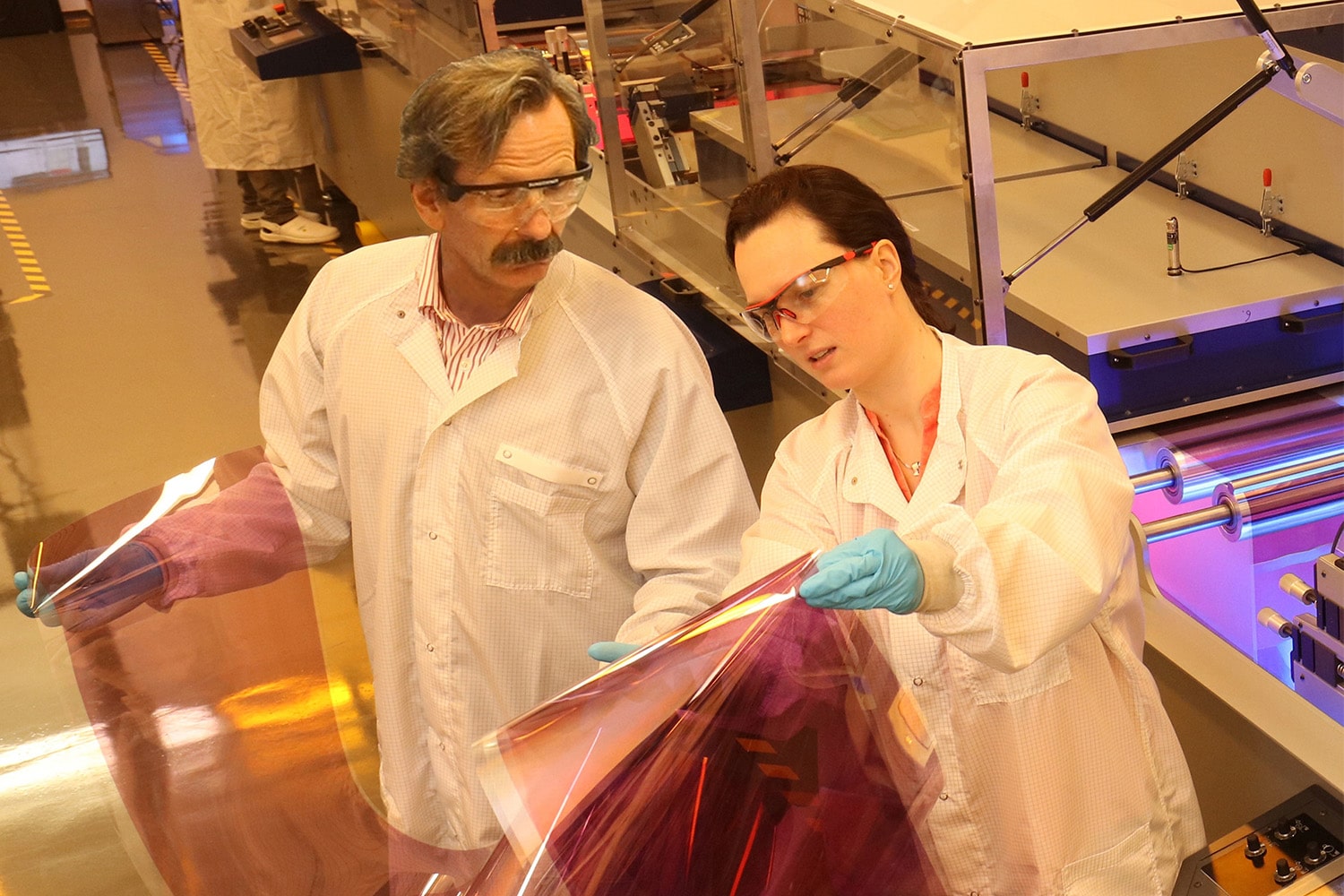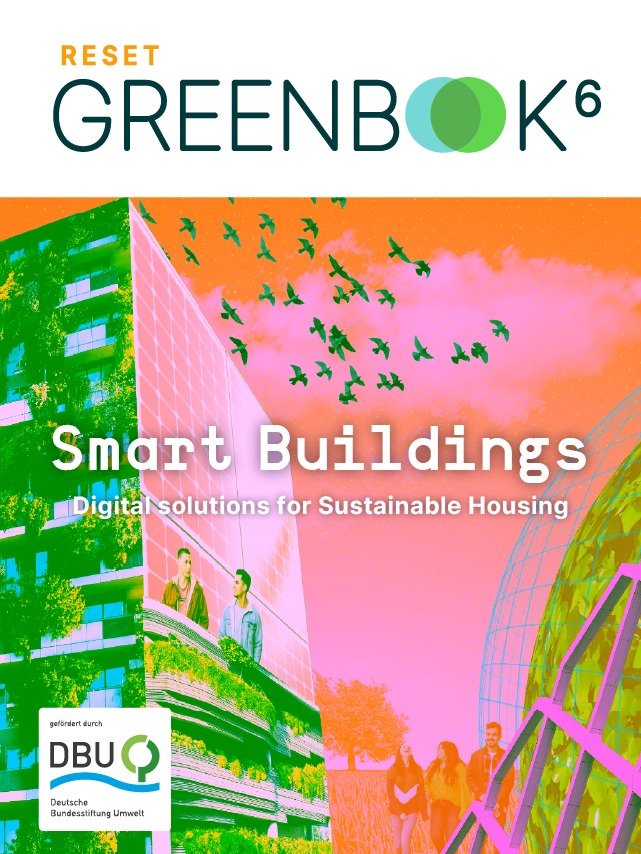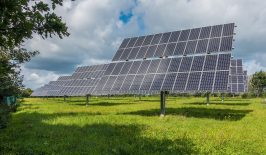Solar energy brings to mind large, rigid photovoltaic systems in open spaces or on houses that convert solar radiation into electrical energy. But new developments make the technology both more efficient and increase its possible applications.
Researchers from the Helmholtz Association want to use innovative, printable solar panels to open up all facade surfaces of buildings for so-called ‘multi-benefit photovoltaics’. “In order to achieve the German government’s goals for the expansion of photovoltaics in the next few years, we will have to massively expand installations in Germany […] In Germany alone, we will have to open up thousands of square kilometres of land for photovoltaics. Conflicts are inevitable. That’s why we want to make areas usable for photovoltaics that are already being used for other functions and where photovoltaics brings even more advantages,” says Prof. Ulrich Lemmer, who is involved in the project on behalf of the Karlsruhe Institute of Technology.
For this purpose, novel technologies will be developed or current ones enhanced. The Solar TAP innovation platform will facilitate convenient accessibility for industries, societies, and consumers alike.
Which photovoltaic technologies are in focus?
Differing from conventional silicon and thin-film photovoltaics, the researchers in this initiative are focusing on emerging photovoltaic technologies. These systems utilize synthesized semiconductors, encompassing organic and perovskite semiconductors. Over the past decade, these materials have notably boosted their light conversion efficiency, bridging the gap with silicon. For reference, under controlled laboratory settings, silicon solar cells achieve a peak efficiency of approximately 26.7 percent, perovskite systems around 25.7 percent, and organic solar cells about 20 percent.
The major advantage of the new photovoltaic technologies compared to the already established systems is their ability to provide researchers with significant flexibility in customizing solar cells for their specific applications. “They can be tailored precisely, for instance, for visually appealing building-integrated photovoltaics or optimal light transmission for crop growth,” explains Professor Christoph Brabec from the Helmholtz Institute Erlangen-Nuremberg. And there are even more benefits: “The modern organic and perovskite semiconductors are defect-tolerant and can be easily processed. This allows for the printing of solar cells. Consequently, cost-effective manufacturing processes with high throughput are possible, even on flexible substrates,” adds Professor Eva Unger from the Helmholtz Center Berlin.
Scientists of the Helmholtz Association agree that the new emerging photovoltaic technologies, while currently requiring further refinement, are worth the research effort due to their significant potential.
Buildings are a CO2 heavyweight: the construction, heating, cooling and disposal of our homes accounts for around 40 percent of Germany’s CO2 emissions. We will only achieve our climate goals if these emissions are massively reduced.
But how can we achieve the sustainable transformation of buildings and what role do digital solutions play in this? The RESET Greenbook provides answers: Building transformation – intelligently transforming houses and neighbourhoods.
The multi-benefit photovoltaics of the future
The first companies are already commercialising organic and perovskite-based solar cells via the Solar TAP platform and testing corresponding products in practice. The more than 45 industrial partners consist of a group of companies ranging from small start-ups to large corporations. Within the innovation platform, both sides—the Helmholtz Association on the research side and the companies on the practical application side—benefit from a constant exchange of knowledge.
The collaboration has already yielded initial outcomes. One illustration is the laboratory for building-integrated photovoltaics at the Helmholtz Centre in Berlin-Adlershof, which commenced operations in September 2021. The structure was outfitted with 360 solar modules, each producing around 135 watts of power. Consequently, the total peak output amounts to just under 50 kilowatts. Additionally, the building was equipped with comprehensive sensor technology to gauge solar cell performance amidst actual weather conditions. When considering the practical instance of thin-film photovoltaics, it might not be immediately apparent that these are solar modules. Only upon closer inspection and with relevant knowledge does the contemporary-looking façade reveal its function.
In addition to incorporating solar cells into facades, multi-benefit photovoltaics place a significant emphasis on agrivoltaics – the merging of agriculture and photovoltaics. And who’s to say that these two domains can’t coexist harmoniously? Perhaps in the future, the integration of three elements will become feasible within contemporary structures: residential spaces, the production of eco-friendly solar energy, and the vertical cultivation of fruits and vegetables concealed behind semi-transparent solar panels. After all, who wouldn’t relish the opportunity to indulge in fresh raspberries and blackberries during the summer months?










